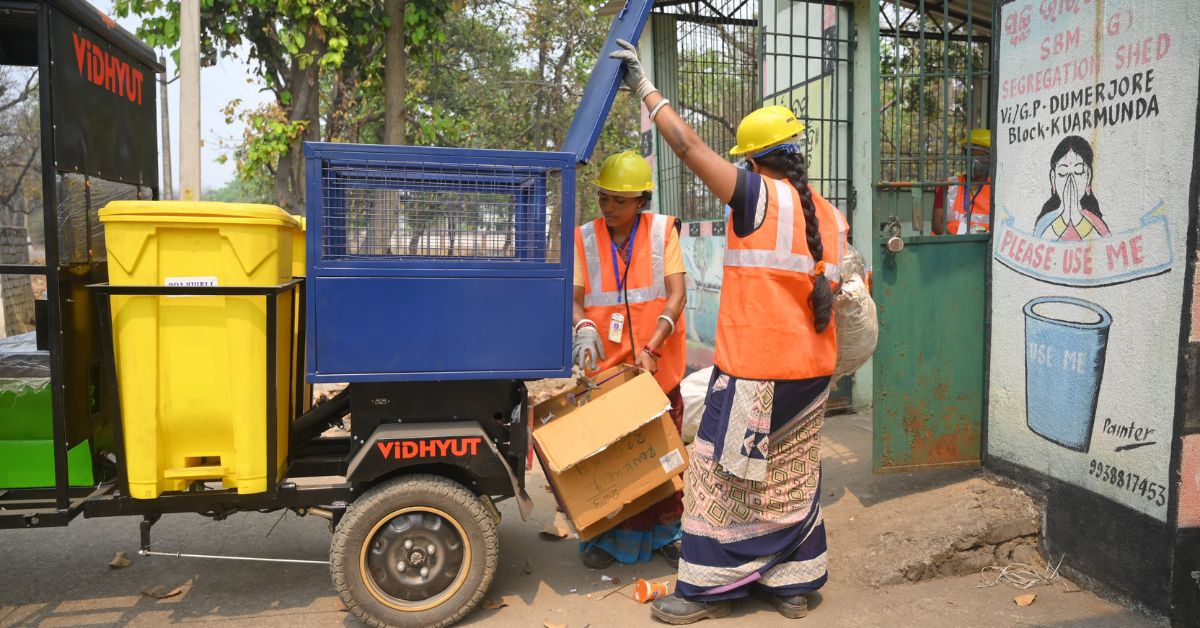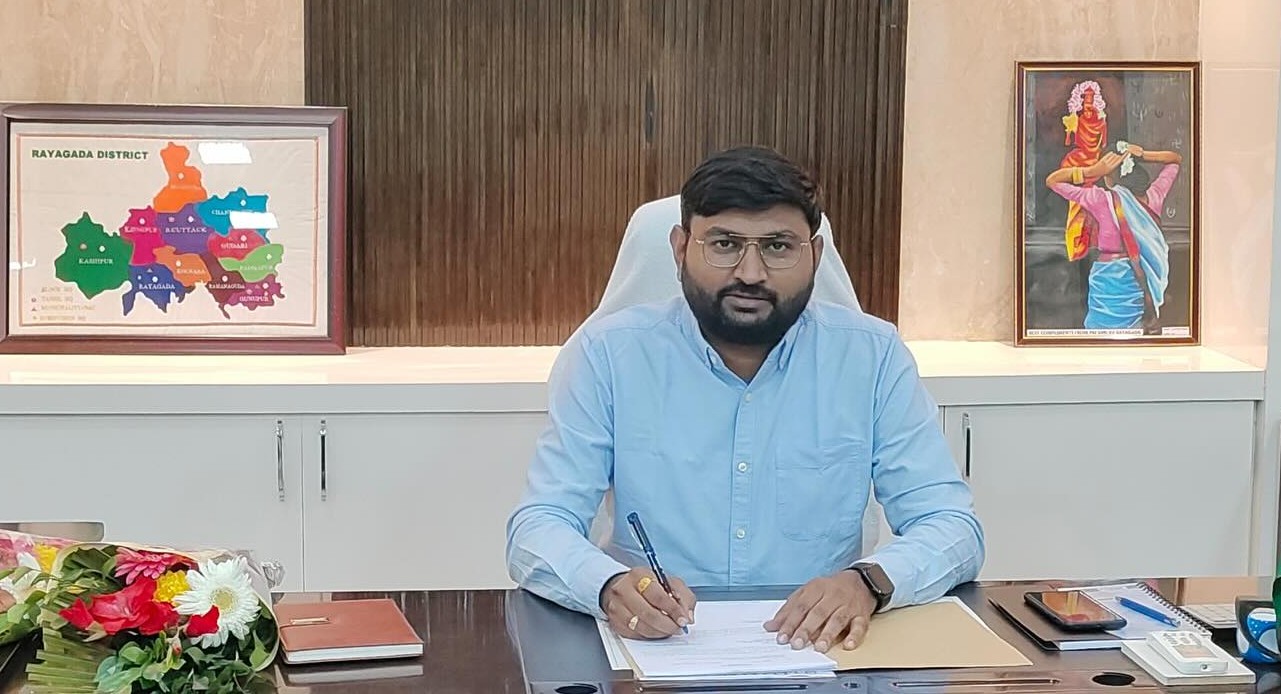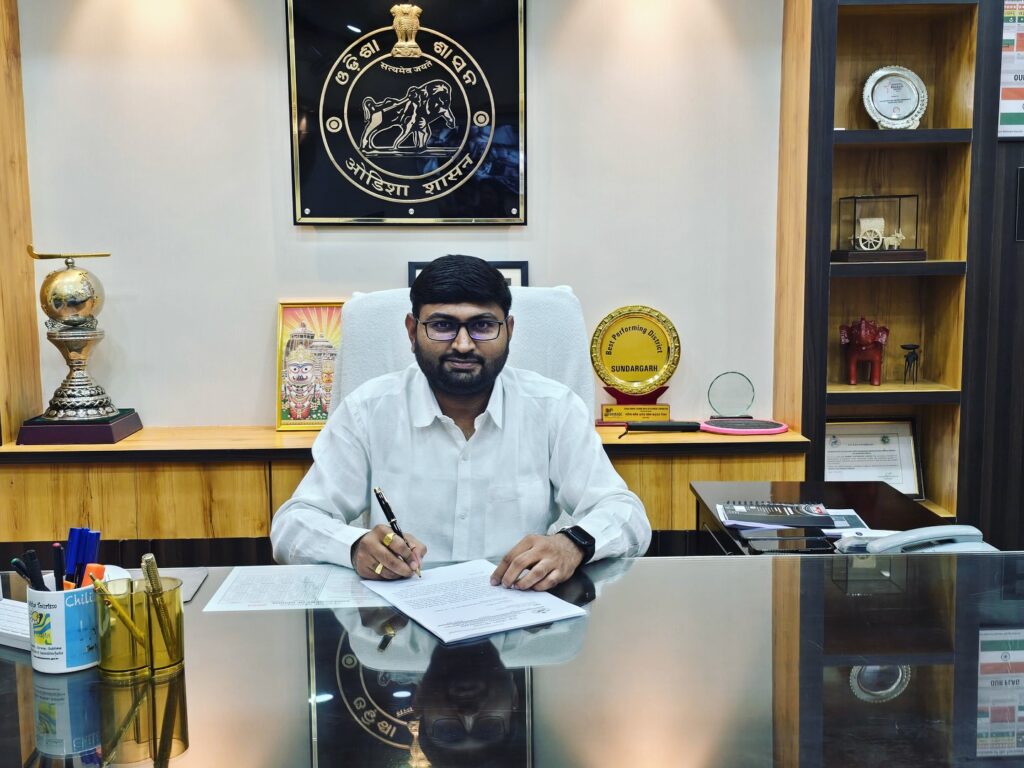SUNDARGARH, ODISHA — Every morning, before the sun pierces the hilly landscape of Sundargarh, women in bright sarees and rubber gloves set off on tricycles, stopping at each home and shop with one mission: clean up the plastic waste choking their communities.
These women, known locally as Swachhta Sathis, are the backbone of the Aama Sundargarh Swachh Sundargarh initiative, a district-wide rural waste management project launched under the leadership of 2019-batch IAS officer Manoj Satyawan Mahajan. Since its inception in 2021 and rollout in early 2023, the program has diverted over 360 metric tonnes of plastic away from landfills and generated ₹17 lakh in revenue.
But this is more than an environmental effort — it’s a story of dignity, of economic independence, and of rewriting how waste is handled in India’s rural heartlands.

Empowering Women, One Kilogram at a Time
At the center of the initiative are 470 rural women, trained not only in door-to-door waste collection but also in operating machines like balers, shredders, and air blowers at segregation sheds. These women now run Material Recovery Facilities (MRFs) and decentralized centers across Sundargarh — and earn an average monthly income of ₹6,500–₹7,500.
Take Monika Minz, a 50-year-old from Kacharu Gram Panchayat. Once a daily wage laborer, she now works three hours every morning collecting and sorting plastic waste. “I earn enough to pay my children’s school fees and run my home. People now call me Swachhta Didi. I take pride in my work,” she says.
The initiative ensures plastics with market value, like PET bottles, are sent to certified recyclers. Low-value plastics, such as multilayered wrappers, are used for road construction and as fuel in cement kilns, embedding circular economy principles into rural life.

Bridging Villages and Vision with Tech, Policy, and Heart
The program grew out of the Swachh Bharat Mission (Gramin) and adopted the Urban-Rural Convergence (URC) model. However, Sundargarh’s vast geography and limited urban infrastructure prompted the district to develop its own decentralized strategy — one that leaned on community involvement and technical support from UNICEF.
Manoj Mahajan recalls witnessing waste burning, clogged drains, and unsegregated garbage during his field visits. “People didn’t know what to do with waste,” he said. That realization led to a ₹14 crore investment covering infrastructure, human resource support, and operations.
Battery-operated vehicles were introduced to help the district navigate its scattered terrain efficiently. Today, the initiative covers 1,682 villages and impacts over 3.6 lakh households, nearly 70% of the district’s rural population.
In 2024, Sundargarh was awarded Best Performing District under Swachh Bharat Mission (Gramin) for plastic waste management — a testament to what collective willpower and decentralized governance can achieve.
“This is more than waste management,” Mahajan says. “It’s about changing lives, mindsets, and giving dignity to work often looked down upon. For me, it’s deeply fulfilling.”
From cleanliness to women’s empowerment to sustainable infrastructure, the transformation in Sundargarh is not just local — it’s a blueprint for rural India.


